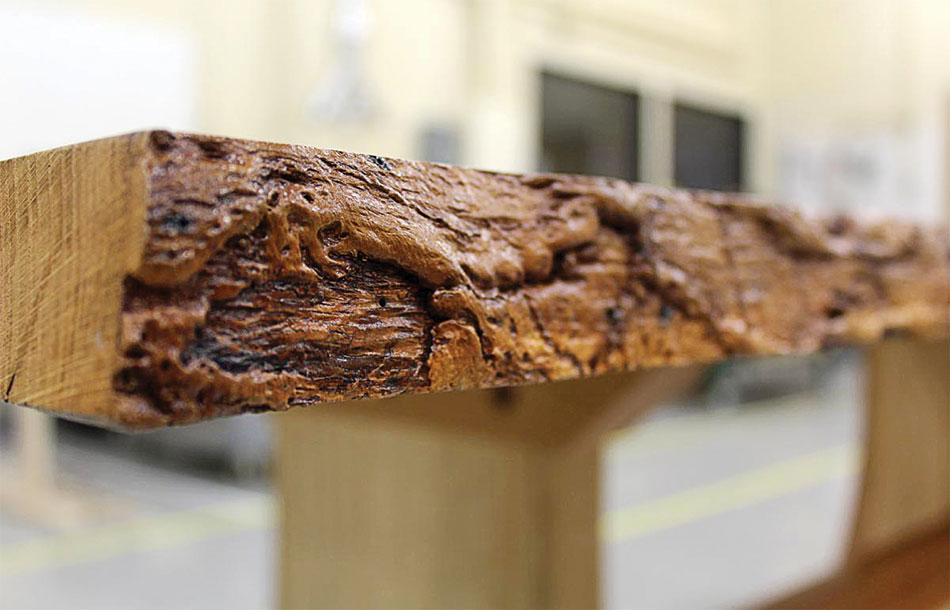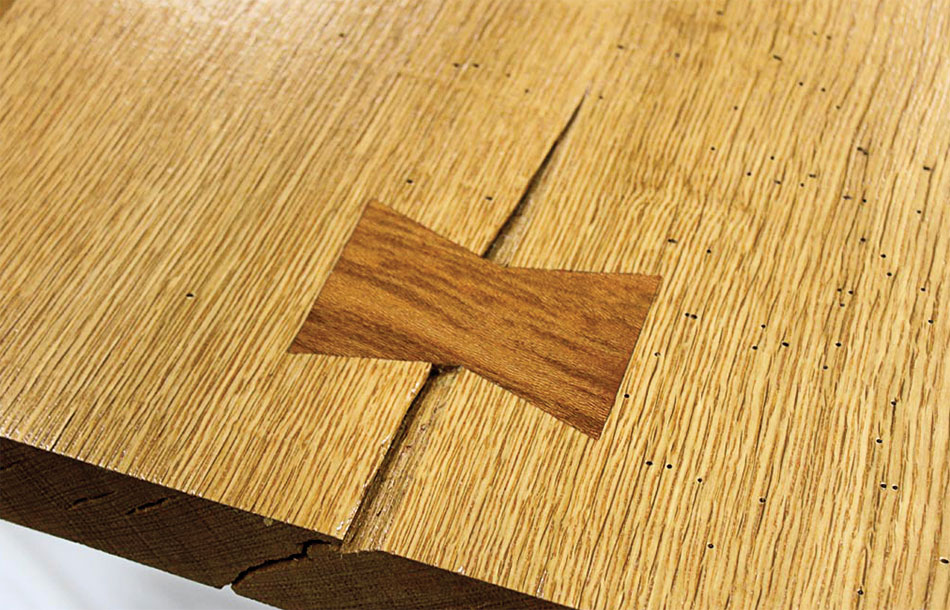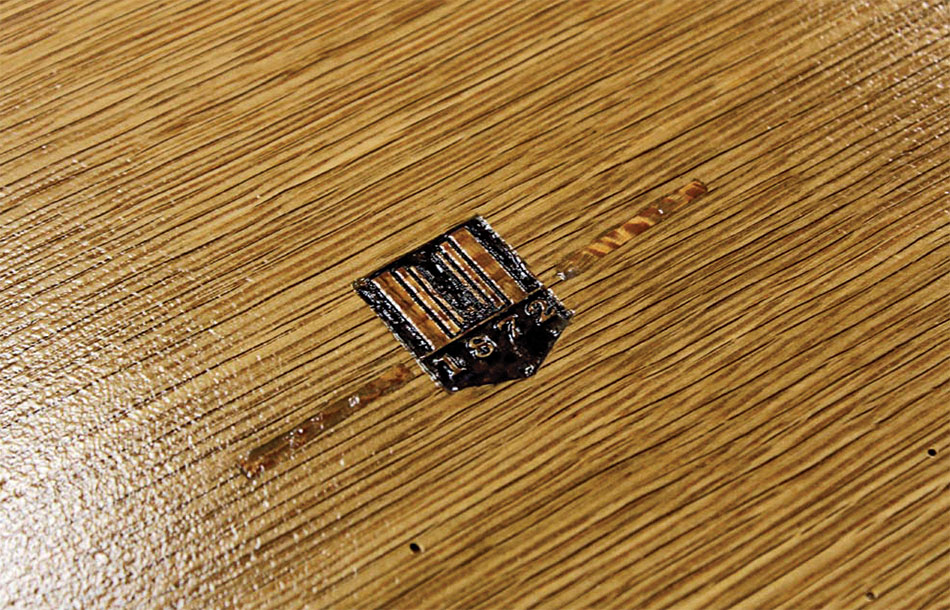Each year, the College of Natural Resources and Environment's Wood Enterprise Institute (WEI) — a student-run, faculty-supported entrepreneurial organization — design, construct, market, and sell a wood product. This year's team brought two historic campus trees felled by disease back to life by incorporating their wood into three unique tables. Proceeds from two of the tables benefited the university's urban/campus forest sustainability program and Smithfield Plantation. The third will be donated.
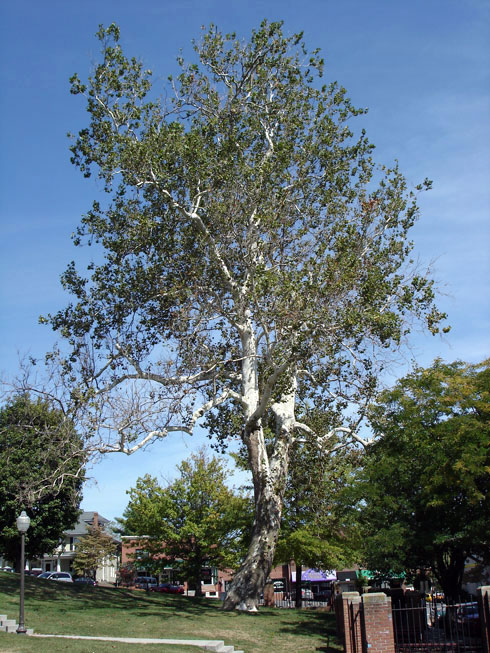
The Henderson Lawn sycamore in 2007
The Grove white oak
Growth rings number 314, but the tree grew for years before it produced rings, so it easily predates 1700. For perspective, the original Drapers Meadow settlement in the area wasn't established until 1749.
The Henderson Lawn sycamore
In 2010-11, WEI students obtained the butt log (more than 4 feet in diameter) from this 140-year-old tree. This year's students used slabs of the darker sycamore to fill in where defective wood at the pith of the white oak had to be removed.
It takes a team to make a table:
· Earl Kline, professor of sustainable biomaterials, directs WEI.
· Eric Wiseman, associate professor of urban forestry, organized the harvesting of the white oak tree.
· Local aborist David Richert (forestry and wildlife '98, M.S. forestry '01) delivered the green logs to the college's Brooks Forest Products Center.
· Eric Carbaugh (forestry '06, M.S. '15) processed the logs into slabs.
· Carolyn Copenheaver, associate professor of forestry ecology, analyzed the tree disk to establish the date reference.
· Brian Bond, professor of sustainable biomaterials, dry-kilned the white oak slab lumber.
· Peter Sforza, director of the Center for Geospatial Information Technology, created a virtual digital standing tree to reference the location in the tree from which the tables were produced.
· Danny Hazelwood, a graduate student in sustainable biomaterials, designed and crafted the prototype table.
· Baillie Lumber Co. donated materials to craft the table legs.
· Senior Wendell Foster Jr., of Suffolk, Virginia, and junior Dayna Reynolds, of Round Hill, Virginia, promoted the tables.
Learn more about the team, the trees, and the crafting of the tables →
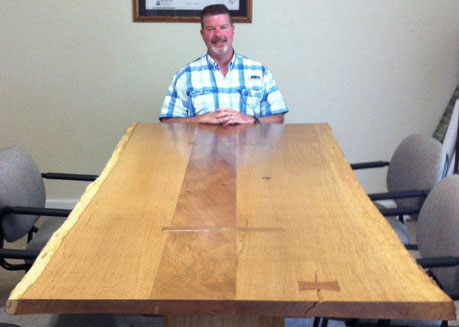
Mike Hincher '88
Nov. 15, 2016
WEI tables stay in the CNRE 'family'
Mike Hincher (forestry and wildlife '88) purchased one of the WEI-produced tables for the conference room of his firm, The Forestland Group: "Thank you all for allowing me to purchase what is truly a one-of-a-kind table."
Paul McDaniel (wood science and forest products '01, M.S. forest products '03) purchased a table for his parents' 40th anniversary: "My dad was speechless. He was able to show it off to all of his friends."
